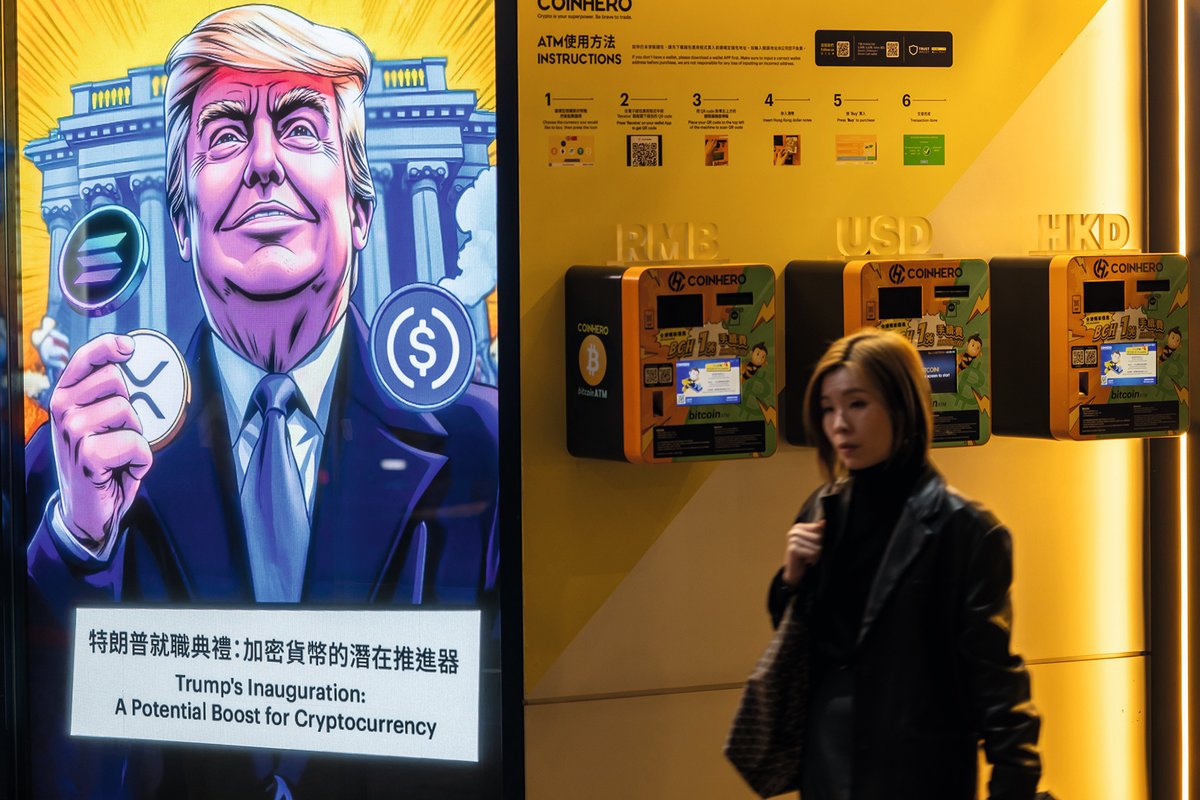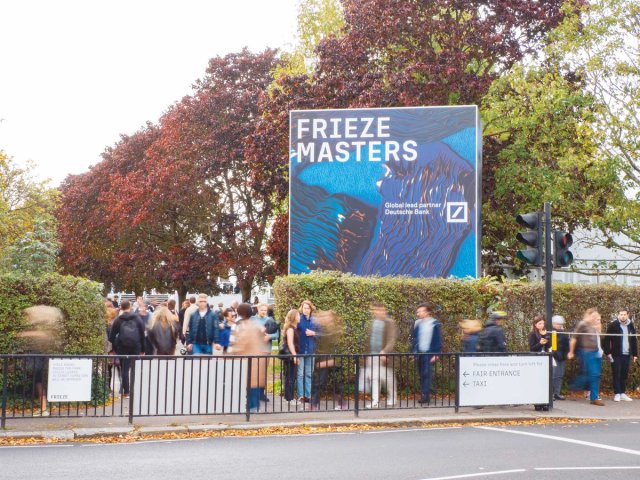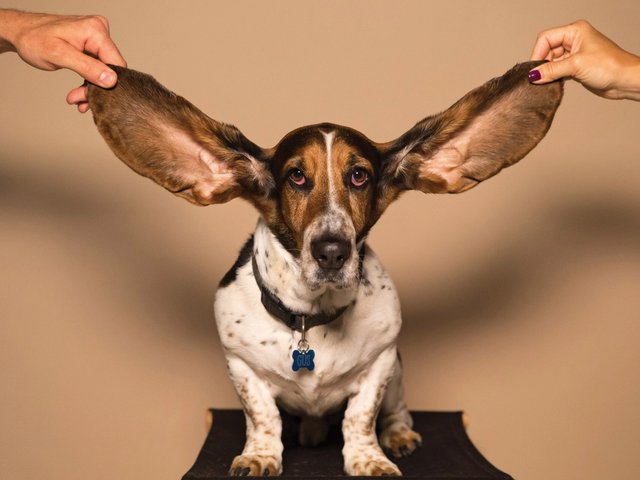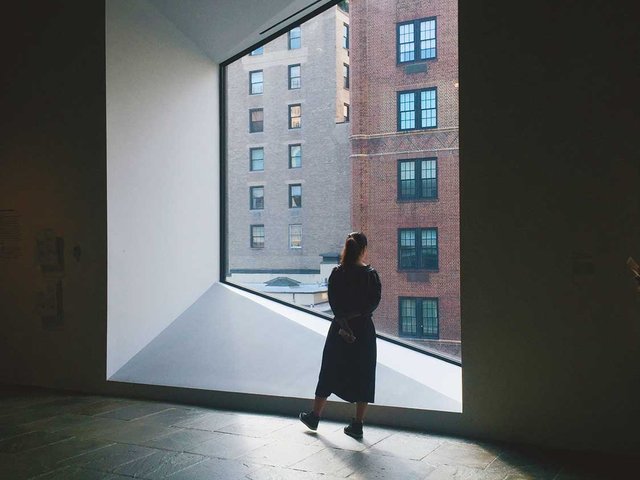On 20 January, Donald J. Trump, a convicted felon, once again became president of the United States. Trump 2.0 has planned to cut taxes and regulation, bring cryptocurrencies into the financial mainstream, deport millions of migrants, tear up his country’s climate commitments, wage trade wars with China and Europe and possibly annex the Panama Canal, Greenland and now even the Gaza Strip. America has turned into a “revisionist state to contest the liberal international order”, says John Ikenberry, professor of politics at Princeton University.
For those involved in the international art trade, which has been in a slump for the past two years, at least some of this could be good news. “The return of Donald Trump will bring tax reforms that favour high-net-worth individuals, which boosts high-end art purchases,” says Magnus Resch, a New York-based entrepreneur and author of the 2024 book, How to Collect Art. “A more crypto-friendly administration may also reignite interest in NFTs and blockchain-based art transactions.”
But can it be assumed that America’s wealthiest, whose political allegiances seem to be lurching relentlessly to the right, will show renewed enthusiasm for buying high-value art, particularly contemporary art, which, perhaps more than any other creative product, tends to embody the moral values of the “liberal international order”?
In a recent opinion piece for the Financial Times, Peter Thiel, the right-wing tech billionaire and long-time Trump supporter, declares that the next four years will witness an apocalyptic comeuppance for what he terms the liberal “ancien régime”. He adds that this old guard, the 21st-century equivalent of the French aristocracy on the eve of the 1789 Revolution, maintains an outdated faith in a “moral universe”, has endlessly “relitigated ancient history” through identity politics, and waged a reactionary, denialist war against the internet, a war “the internet won”. In other words, morality has lost.
The Democrats’ comprehensive defeat in the 2024 US elections and the rise of right-wing support in Europe have left liberals having to ask themselves some tough questions.
This questioning has even percolated down to the contemporary art world, whose current fixation with identity was the subject of a blistering polemic by the art critic Dean Kissick in Harper’s Magazine in December. Visits to recent “lifeless” curated exhibitions, such as last year’s Venice Biennale and Whitney Biennial, led Kissick to conclude: “Once we had painters of modern life; now we have painters of contemporary identities. And it is the fact of those identities—not the way they are expressed—that is understood to give value to our art,” adding: “When the self is more important than the expression, true culture becomes impossible.” And nobody cares. “Curators keep fighting a culture war that has already ended in the world outside,” Kissick says. In the outside world, major corporations such as Meta, McDonald’s, Amazon and Walmart are abandoning their diversity, equity and inclusion programmes to find favour with President Trump.
But what about the art that is being sold—or at least exhibited—in galleries and at fairs? Can dealers afford to represent artists whose works are left-leaning and politically hard-edged when so many of those with the money to buy serious contemporary works are leaning to the right?
The market’s solution—clearly visible in galleries, fairs and auctions of resold works by contemporary artists—is painting that seems politically neutral and in some way calmingly decorative. Hence the recent commercial success of pure abstraction (Cecily Brown, Jadé Fadojutimi, Lucy Bull), abstract figuration (Flora Yukhnovich, Christina Quarles, Avery Singer), Neo-Surrealism (Julie Curtiss, Ben Sledsens), and what might be termed “cosy” representation (Jonas Wood, Hilary Pecis). While auction resale prices for several of these artists have fallen dramatically over the past two years, this kind of painting is still the commercial mainstay of the contemporary market.
“People are so worried about wars and climate change that they want to soothe their minds with something beautiful, nothing negative, something nice to look at,” says Luc Haenen, an Antwerp-based collector, explaining the dominance of painting in today’s market. “Also, if something bad happens, they can at least get their money back, they hope.” Haenen was in London for the seventh annual edition of Condo, a collaborative group exhibition scattered across the capital’s contemporary galleries, which opened two days before Trump’s inauguration.
This year’s Condo London (until 15 February) features 22 contemporary galleries showing exhibitions from 27 international guest dealerships, as well as presentations of their own. There is certainly plenty of painting on show, but several of the participants are challenging visitors with more conceptual offerings that do not seem like obvious investment opportunities.
Not so safe
The east London gallery Soft Opening, for instance, is showing inscrutable Neo-Surrealist metal sculptures by the British artist and jeweller Joanne Burke, whose work has yet to be resold at auction. These unique pieces used as their starting point the centuries-old divination practice of hydromancy, dropping molten wax into cold water, with chance determining shape. They are priced from £1,800 to £3,500.
Meanwhile, the Whitechapel-based Carlos/Ishikawa is hosting Face ID, a show of recent paintings by the young South Korean artist Moka Lee (see p18), represented by the Seoul dealer Jason Haam. Lee’s enigmatic close-up images, reminiscent of those created by Issy Wood, who is one of Carlos/Ishikawa’s most sought-after artists, are more substantially priced than Burke’s, at $15,000 to $80,000. In November, one of Lee’s paintings was resold at auction in Hong Kong for a triple-estimate $212,000 (with fees), which might have given primary market buyers some confidence.
But when it comes to painting, the main event for many isn’t Condo, but the opening of the first solo presentation of new work by Lynette Yiadom-Boakye seen in a commercial gallery since 2019.
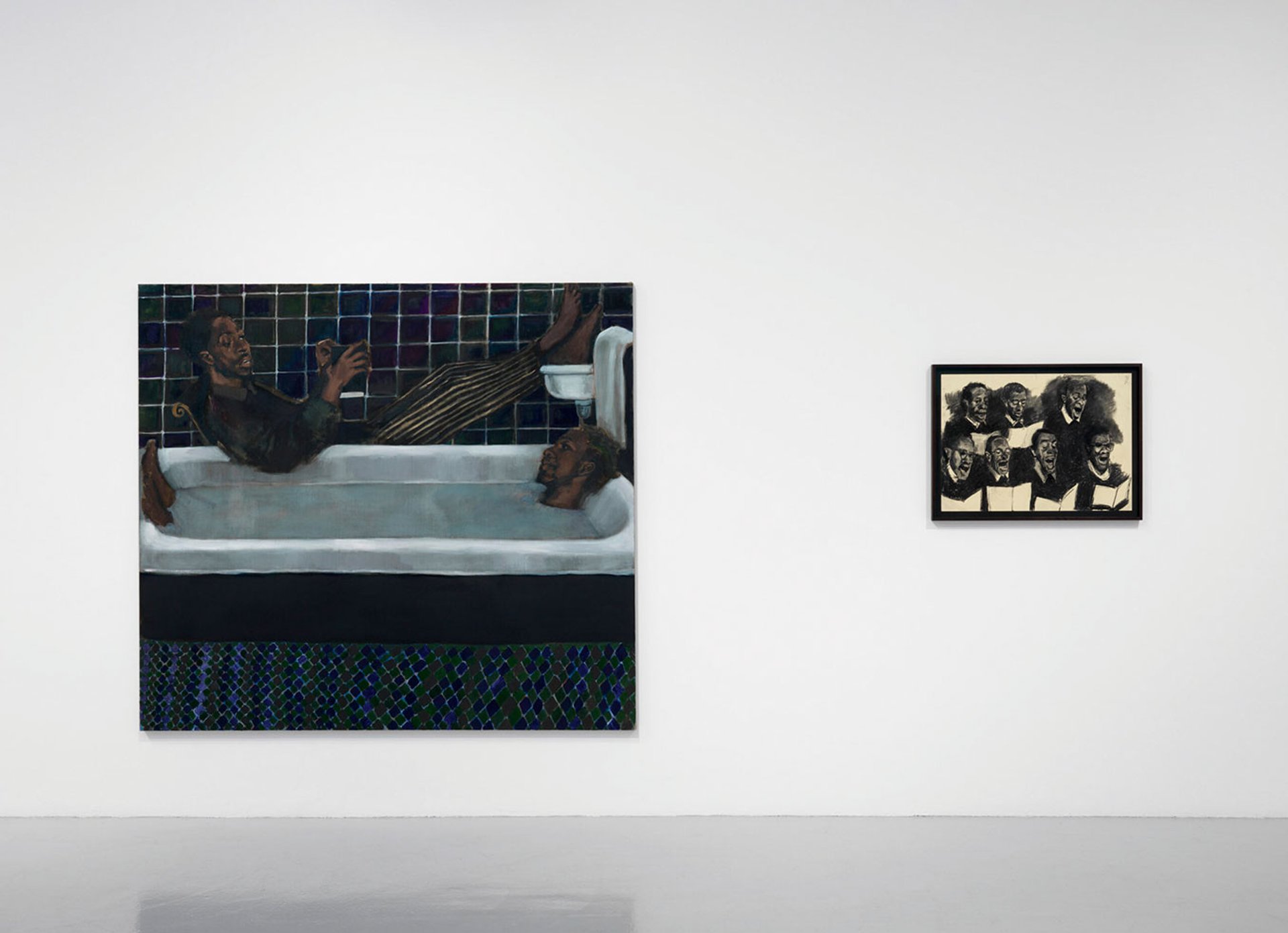
All 12 paintings and four drawings in Lynette Yiadom-Boakye’s Keep The Moon Amongst Ourselves exhibition at Corvi-Mora gallery have been sold, mainly to private collectors
Photo: Marcus J. Leith
This critically acclaimed London-based artist and writer of Ghanaian heritage, who was the subject of a recent career survey at Tate Britain, is represented by the Kennington-based dealer Corvi-Mora. This latest body of work, titled Keep The Moon Amongst Ourselves, consisting of 12 canvases and four works on paper, shows a trademark cast of vividly realised imaginary characters doing timeless, ordinary things like having a bath, reading a book, sitting around, having a think, without identity or morality being noticeable issues. All have been sold, mostly to private collectors, for between $300,000 and $850,000, according to Tomasso Corvi-Mora, the gallery’s founder. At a time when gallery prices of many once sought-after artists now exceed resale values, Yiadom-Boakye auction prices continue to hold up well. A 2011 canvas by her sold at Phillips last November for $1.8m (with fees).
But just when some signs of positivity and sanity were beginning to return to the art market, the news broke that the US president-elect had issued his own crypto meme coin, known as $Trump, four days before his inauguration. After a frenzy of speculative trading, the 200 million digital tokens more than doubled in value and generated a 24-hour trading volume of $52.4bn, according to CoinMarketCap. The most recent Art Basel/UBS art market report estimated global sales for the whole of 2023 at about $65bn.
“We’re in an age of chaos. We’re experiencing huge disruptions in the digital, geopolitical and economic worlds,” says Sylvain Levy, the Paris-based collector who displays his collection of Chinese contemporary art on digital platforms. “But from chaos you can have creation. We’ll have to wait and see what that is.”


